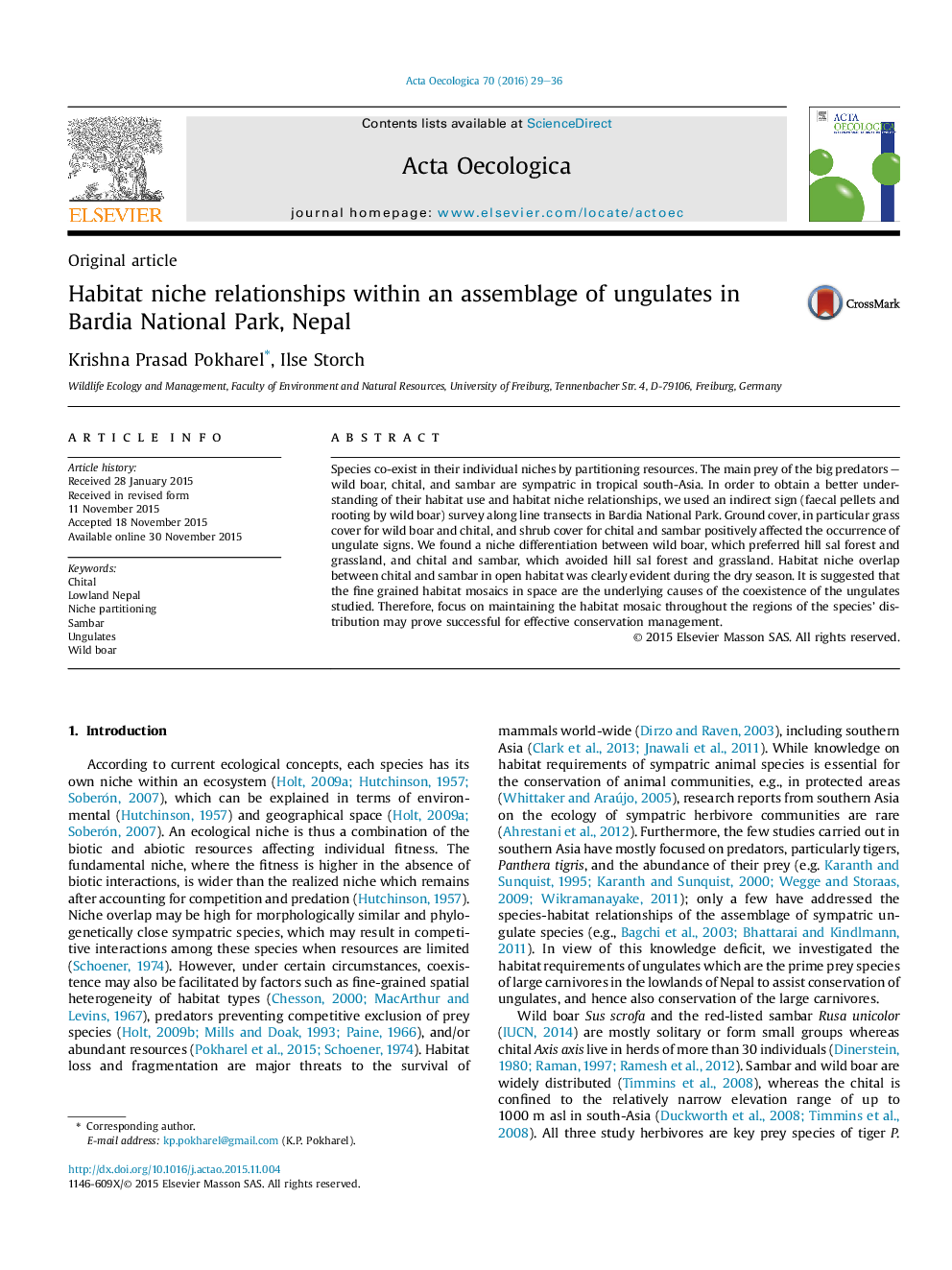| Article ID | Journal | Published Year | Pages | File Type |
|---|---|---|---|---|
| 4380797 | Acta Oecologica | 2016 | 8 Pages |
•Topography and ground cover are important habitat features for ungulates.•Wild boar, and chital and sambar partition their resources along space.•Habitat niches between chital and sambar overlap in open habitat during dry season.•We suggest that the habitat mosaic in landscape support coexistence of ungulates.•Maintain habitat mosaic through controlled burning – suggested conservation action.
Species co-exist in their individual niches by partitioning resources. The main prey of the big predators – wild boar, chital, and sambar are sympatric in tropical south-Asia. In order to obtain a better understanding of their habitat use and habitat niche relationships, we used an indirect sign (faecal pellets and rooting by wild boar) survey along line transects in Bardia National Park. Ground cover, in particular grass cover for wild boar and chital, and shrub cover for chital and sambar positively affected the occurrence of ungulate signs. We found a niche differentiation between wild boar, which preferred hill sal forest and grassland, and chital and sambar, which avoided hill sal forest and grassland. Habitat niche overlap between chital and sambar in open habitat was clearly evident during the dry season. It is suggested that the fine grained habitat mosaics in space are the underlying causes of the coexistence of the ungulates studied. Therefore, focus on maintaining the habitat mosaic throughout the regions of the species’ distribution may prove successful for effective conservation management.
